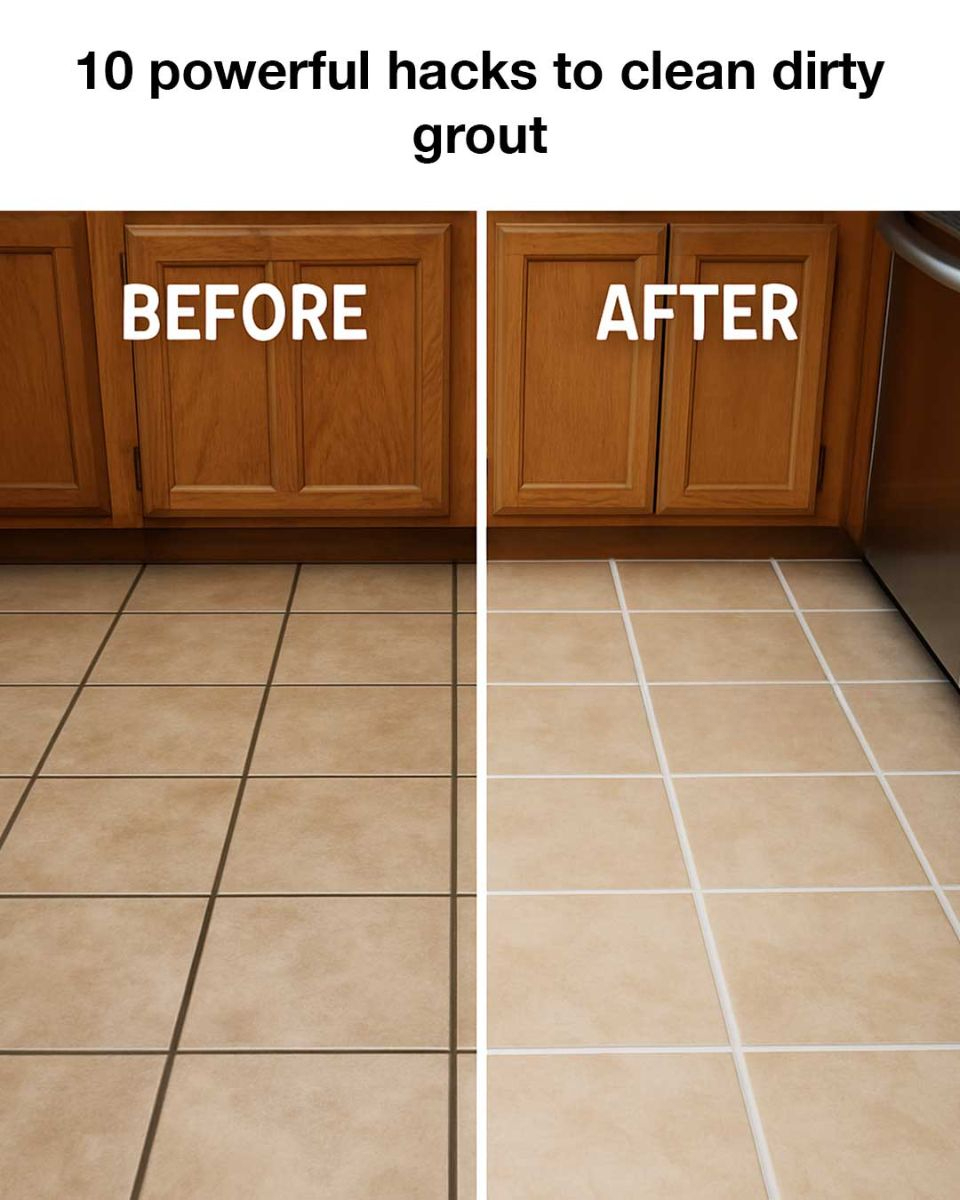Grout, the material that fills the spaces between tiles, often gets ignored until it turns dingy or stained, making even a spotless room feel dirty. Due to its porous nature, grout easily absorbs dirt, moisture, and grime, especially in humid spaces like kitchens and bathrooms. Unlike wiping down a countertop, cleaning grout requires more effort because of its narrow lines and rough texture that trap buildup over time.

Keeping grout clean is about more than just appearance—it also impacts your home’s hygiene and the durability of your tile work. If left dirty, grout can breed mold and bacteria, contributing to poor indoor air quality and triggering allergies or respiratory problems. As grime accumulates, it can break down the grout, eventually causing tiles to loosen or crack, which leads to costly repairs. Fortunately, you don’t need professional services to bring your grout back to life—just a few powerful hacks and a bit of elbow grease. One of the most affordable and effective methods is a paste made from baking soda and vinegar. Mix baking soda with water to make a thick paste and spread it along the grout lines. Spray or pour vinegar on top and let the fizzing action do the work of lifting grime from the surface. After a few minutes, scrub with a stiff brush and rinse—it’s an all-natural, chemical-free solution that works wonders.
For tough stains and whitening, try combining hydrogen peroxide and baking soda into a paste. This mixture not only brightens grout but also helps kill mold and mildew. Apply the paste to the grout, let it sit for ten minutes, then scrub and rinse. It’s safe for most types of grout and is especially helpful for persistent discoloration. If you want something with a fresh scent and gentle scrubbing action, mix lemon juice with borax. Lemon acts as a natural bleach and borax provides a mild abrasive texture.
Spread the mixture on grout lines, let it rest for about 10 to 15 minutes, scrub it in, and rinse to reveal brighter grout and a clean citrus aroma. When dealing with large areas or deeply embedded dirt, steam cleaning is an excellent chemical-free option. A steam cleaner fitted with a grout nozzle penetrates into the grout’s pores to break up dirt and kill bacteria and mold. It’s particularly useful in areas with a lot of foot traffic or high moisture, but always make sure your tile and grout can handle the heat and pressure. If natural methods aren’t cutting it, oxygen bleach is a more powerful solution. Safer than chlorine bleach, it’s suitable for colored grout and tough on stains. Mix it with warm water per the instructions, apply to grout, let it soak for 15 to 30 minutes, then scrub and rinse. It’s highly effective at restoring grout’s original brightness. Store-bought grout cleaners are also a solid choice.
These are designed to tackle issues like mold, grease, or soap scum with concentrated formulas. Be sure to read the labels and select a cleaner that’s compatible with your tile and grout type, and always follow directions carefully. Sometimes, the simplest solution is best—like using a toothbrush and dish soap. The small bristles reach tight grout lines while the soap breaks down grease and dirt. Just apply a little soap, scrub with the toothbrush, and rinse. This method is great for quick touch-ups and routine cleaning. For larger jobs or heavily soiled grout, a power drill with a grout brush attachment can save you time and energy. Apply your chosen cleaner, attach the brush to your drill, and let the motor do the hard scrubbing. This is perfect for big tiled areas or when you’re dealing with years of grime. After putting in the work, it’s wise to seal your grout to keep it clean longer. Grout sealers form a barrier that prevents moisture and dirt from soaking in, making future cleaning much easier. Use a small applicator or brush and follow product instructions. Reapply every six to twelve months to maintain protection. Lastly, consistent upkeep goes a long way. Sweep or vacuum tiled areas regularly to prevent dirt from settling into grout lines. Wipe up spills promptly and use a gentle cleaner for weekly maintenance. If discoloration starts to show, a grout pen can touch up the color easily and restore the clean appearance. By using these ten effective grout-cleaning hacks, you can keep your tiled areas looking sharp and fresh throughout the year. Whether you prefer natural cleaners, power tools, or a combination of both, the key is consistency and a bit of effort to maintain a clean, healthy home environment.





